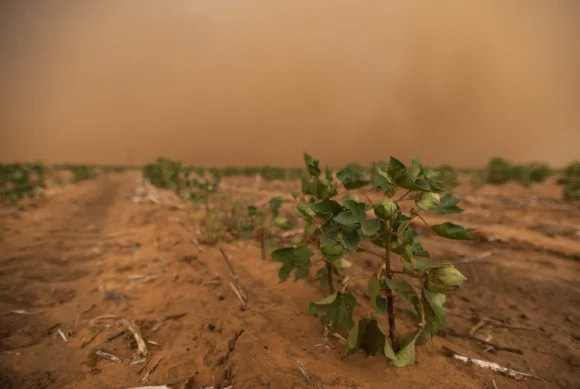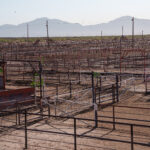Drought, heat, hail, rain and freezing temperatures – the five horsemen of crop insurance.
A new report from EWG found that crop insurance payouts for the top five weather-related losses totaled over $118.7 billion between 2001 and 2022, making up nearly three-fourths of all indemnities.
The report also includes maps illustrating which areas across the U.S. that are at greatest risk from the various elements as climate change accelerates.
“EWG’s new report and hot spot map demonstrate that the climate emergency and crop insurance are inextricably linked,” said EWG Midwest Director Anne Schechinger, an agricultural economist who authored the report. “As extreme weather events become more common and more catastrophic, farmers will continue to suffer, and taxpayers will continue to foot much of the astronomical bill.”
Nationally, between 2001 and 2022, the federal Crop Insurance Program sent farmers over $161.6 billion in payments for all causes of loss. Weather-related claims comprised 73% of total crop insurance payments during that time.
Drought was the priciest cause of loss, costing $56.6 billion, or 35% of total payouts between 2001 and 2022. These costs have risen 690%, from $965.5 million in 2001 to $7.6 billion in 2022. Almost three-fourths of all drought indemnities went to 10 states: Texas, Kansas, South Dakota, Iowa, Illinois, North Dakota, Nebraska, Missouri, Oklahoma and Minnesota.
Excess moisture and precipitation indemnities reached $39.8 billion – 25% of all payouts. From 2001 to 2022, that’s a 123% increase, from $1 billion to $2.2 billion. Over half of the payouts were concentrated in just six states: North Dakota, Minnesota, South Dakota, Iowa, Illinois and Missouri.
Hail payments cost $9.65 billion, 76% of which went to farmers in seven states: Texas, Nebraska, North Dakota, Kansas, Colorado, South Dakota and Montana. Costs were up 204%, from $228.3 million in 2001 to $692.9 million in 2022.
Heat indemnities totaled $7.98 billion. It had the most significant yearly cost increase at 1,012%, from $142.5 million in 2001 to $1.6 billion in 2022.
Freeze payments were $4.74 billion, up 771%, from $78.6 million in 2001 to $683.9 in 2022.
Some states were in hot spots for multiple weather-related causes of loss. Texas was in the top 10 states for each of the five, and farmers received over $15.5 billion for all categories combined. Kansas and North Dakota were in hot spots for four of the five weather-related causes of loss, and many other states, including California, Iowa and South Dakota, showed up in hot spots for three.
The report’s maps identifying the hot spots for top weather threats to agriculture across the U.S. show most threats concentrated in the Midwest and the West Coast. However, heat is considered a significant threat across most of the country. The “freeze” map indicates a growing threat for southern states, including the southernmost parts of Texas and Florida.
These identified hot spots may be most vulnerable to climate emergencies and the most likely to need high payouts.
To read the full report, visit https://www.ewg.org/research/crop-insurance-pays-farmers-billions-dollars-weather-related-losses-closely-linked-climate.
Photo: Cotton Drought
Topics USA Texas Agribusiness Climate Change
Was this article valuable?
Here are more articles you may enjoy.



 Vantage Group to Be Acquired by Ackman-Backed Howard Hughes Holdings for $2.1B
Vantage Group to Be Acquired by Ackman-Backed Howard Hughes Holdings for $2.1B  Viewpoint: Artificial Intelligence Is Rewriting the Rules for Commercial Lines
Viewpoint: Artificial Intelligence Is Rewriting the Rules for Commercial Lines  More US Beef Plants May Close as Cattle Herds Keep Tightening
More US Beef Plants May Close as Cattle Herds Keep Tightening  ‘Door Knocker’ Roofers Were Everywhere. NC Farm Bureau Saw an Opportunity
‘Door Knocker’ Roofers Were Everywhere. NC Farm Bureau Saw an Opportunity 

